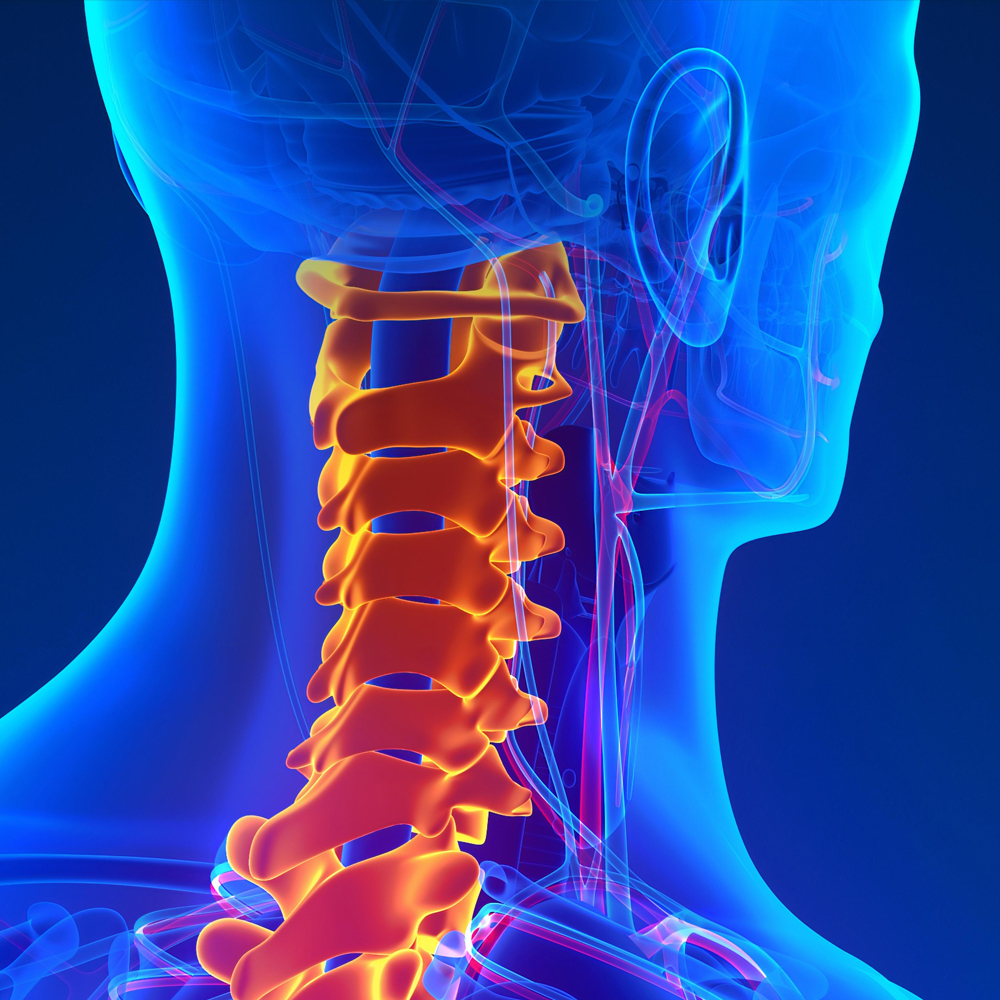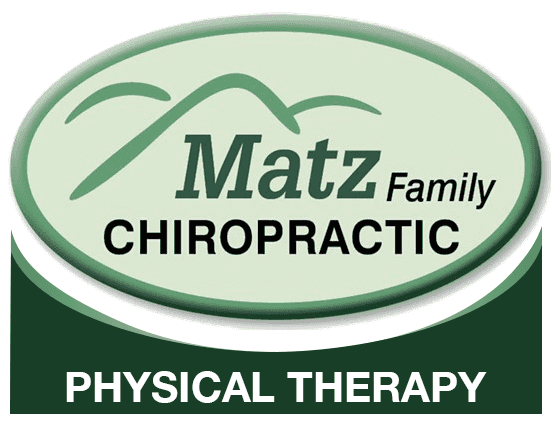
What is Chiropractic?
The practice of chiropractic focuses on the relationship between structure and function and how that relationship affects the preservation and restoration of health. Our chiropractors can help with conditions like back pain, neck pain, arm pain, headaches, arthritis, asthma, and other conditions. Your nervous system is the “electricity for your body,” when that is diminished that system will not function correctly. Chiropractors remove tension and nerve pressure from the body so that your body can heal from the inside out.
Why We Take X-rays
We use the Blair X-ray analysis to take a look at the spine. We are able to create a 3D image of the upper neck so that we can visualize exactly what is going on. X-rays are an effective way to view the structure and general condition of the spine. X-rays can reveal spinal regions under high stress and they can expose degenerative change.
Stages of Chiropractic Care
Usually a patient will have three stages of care
Relief
Stage One
We strive to get you out of pain as quickly as possible.
Correction
Stage Two
After pain relief a typical patient will need corrective adjustments and exercises will be given to maintain a healthy spine.
Wellness
Stage Three
At Matz Family Chiropractic we help get you better and keep you there.
3D Imaging

Our 3D imaging machine (CBCT) is similar to that of a dental panoramic x-ray. CBCT stands for Cone Beam Computed Technology. The 3D scan of the neck takes only about 10 seconds to perform. This gives us an even better view of the cervical spine than what a regular cervical spine x-ray provides. We can even view how individual joints of each neck vertebra may be misaligned.
Conditions We Care For
At Matz family Chiropractic we work to restore normal nerve function between the brain and rest of the body. When normal nerve function exists, the body is better able to adapt and heal itself. Patients under Blair Upper Cervical care report relief of common complaints such as neck, back, headache pain and numerous other health concerns.
We have a Medical Billing Specialist for your injury in our office to help you through this process.
I Have Trouble With:
Arm Pain/Weakness/Numbness/Tingling
Traveling symptoms down the arms is usually due to a misaligned bone of the neck that is chronic. When a bone is shifted from a neutral position for an extended period of time, muscles can tighten and cause symptoms to appear down the arms.
Asthma
Narrowing and swelling of the airways causing difficulty to breath. Although common it is reversible with treatment. Upper cervical chiropractic care can help increase communication between the brain and the lungs which in turn increases the ability to breathe better after an adjustment. Bones of the upper thoracic spine can also play a role if there is pressure on a nerve that goes to the heart or lungs.
Attention Deficit Hyperactivity Disorder
ADHD is described as difficulty for a child to focus or pay attention, fidgety and can’t stop moving. Children diagnosed with ADHD show improvements in hyperactivity, impulsivity, and inattentiveness under chiropractic care. Getting pressure off of the brain stem with upper cervical adjustments can relax and calm the nervous system.
Automobile & Whiplash Injuries
Motor vehicle accidents do a lot of harm to the spine. One common injury to the neck is whiplash. Whiplash is a rapid, back and forth head motion which causes damage to the ligaments in the spine and can take a long time to properly heal. Some symptoms may include neck pain that travels into the shoulder or arm, headaches, neck stiffness, lack of neck range of motion, dizziness, feeling off balance, and brain fog.
Carpal Tunnel Syndrome
There are 8 tiny bones that make up the wrist. When any of the bones shift from a neutral position, it can put pressure on a nerve in the carpal tunnel causing symptoms into the hand and fingers. Often a tell-tale sign of this is tingling/ throbbing feeling in the fingers at night while trying to sleep. Simple wrist adjustments help greatly with decreased symptoms of carpal tunnel syndrome.
Concussion Symptoms
A concussion is injured brain tissue causing dizziness, tiredness, lack of coordination or unconsciousness. Chiropractic care can get extra pressure off the brain due to trauma from a concussion. Releasing the pressure off of the brain allows the body to heal through concussion symptoms fairly quickly.
Dizziness/Disequilibrium
Feeling of being unbalanced, dizziness and lightheadedness. Upper cervical care works intricately with getting pressure off of the brain stem. The upper neck bones are located very closely to the equilibrium center of the brain. When an upper neck bone shifts out of a neutral position, imbalance and dizziness can occur.
Extremity Joint Pain and Dysfunction
Every joint in the human body can misalign, including extremities. Knees, ankles, shoulders, and wrists are the most common to get adjusted. Joint pain, irritation along with muscle tightness are common symptoms of misalignment.
Infantile Colic
It’s never too early for a child to get adjusted. A small, precise adjustment can make a big difference for the child as they continue to develop. Pressure on nerves can cause dysfunction within the tiny growing body and can also potentially cause slowed developmental progress. This irritation often causes discomfort to an infant, resulting in inconsolable crying on a daily basis. Food intolerance is also a common factor that causes distress for infants.
Leg Pain/Weakness/Numbness/Tingling
Traveling symptoms down the legs is usually due to a misaligned bone of the low back or pelvis that is chronic. When a bone is shifted from a neutral position for an extended period of time, muscles can tighten and cause symptoms to appear down the legs.
Low Back Pain & Tightness
Low back pain can be caused from tight, spasmed muscles. They become that way due to either direct trauma, nerve irritation or by the misalignment of a bone of the spine. Tightness can occur within the muscles around an area where a bone has shifted in the low back or pelvis causing the muscle spasm. The upper neck also can be involved with low back pain. As the first cervical vertebral shifts out of neutral position, it tightens the ligaments on that side all the way down the spine, causing a leg to pull short on one side. Walking or standing on imbalanced legs can cause low back discomfort.
Low Energy Levels / Anxiety
Pressure on the brain stem from an upper cervical misalignment decreases communication from the brain to the body which can cause fatigue and can also alter the emotional state of a patient leading to anxiety and depression-like symptoms. The thyroid, which deals with your body's metabolism, can be working at a lessened state and cause fatigue and extreme tiredness. This can happen from excessive toxins in the body or decreased nerve function of the thyroid from vertebral misalignment.
Migraines & Headaches
Although very common, it is abnormal to have chronic headaches or migraines. The primary cause of headache or migraine symptoms is a misalignment of a neck bone that puts pressure on the spinal cord, nerves, and/or blood vessels going to the head. Unbalanced pressure of cerebrospinal fluid, which nourishes and protects the nervous system, can be a major cause of this increased pressure, causing headaches. Tension also builds around the supporting muscles causing tight, hyperactive muscles. The process of this prolonged tension causes chronic head pressure symptoms.
Neck Pain & Tightness
When a bone is misaligned in the neck it causes pressure on the brain stem, spinal cord, or spinal nerves. Tightness can occur when muscles of the neck start to spasm around a misaligned neck bone. This can put pressure on the joints of the neck causing irritation and pain. “Tech” neck can also cause neck discomfort due to the chronic use of cell phones and electronics in today’s society. “Tech” Neck is an overuse syndrome or repetitive stress injury, where your head leans forward and down looking at cell phones or other technology.
On-the-job & Lifting Injuries
Any repetitive motion injury, fall, equipment accident, or heavy lifting injury that occurs on the job site. These injuries can range from repetitive muscle strains to disc injuries from improper lifting techniques. Common areas of complaint are the low back, neck, legs and shoulders. Care plans are made for effective long term progress and results to help the patient get back to functioning their optimum capacity once again while at work without any increased discomfort.
Sciatica
Nerve pain that travels from the low back down the leg. It can be caused from a bone misalignment or disc herniation putting pressure on the nerve, or it can come from spasmed gluteal muscles that put pressure on the nerve as it travels through or near the muscle.
Scoliosis
Sideways curves of the spine that usually onset during adolescent years. Getting adjusted will help the curves from getting worse and in some cases the curve may lessen in severity. If scoliosis is suspected upon examination, full spine x-rays are taken to analyze the degree of curvature. Knowing how the bones are sitting within the scoliotic spine is very important.
Slip & Fall Injuries
Slip and fall injuries can happen at any time or at any place. They often cause pain at the site of impact as well as other parts of the body. Falling on ice or tripping on stairs can occur more frequently when there is imbalance within the spine.
Sports/Athletic Injuries
Any injury can sideline an athlete from competition. From sprains and strains to spinal injuries, it is important to make sure injuries are evaluated properly and treated promptly. Chiropractic care is an instrumental component of sports performance and preventative health. Many professional athletes get chiropractic care regularly to maximize performance and minimize risk of injury.
Tennis Elbow
Also known as lateral epicondylitis or tendonitis, tennis elbow is inflammation of the tendons and muscles around the outside aspect of the elbow. The cause is usually a repetitive overuse trauma, like swinging a bat, hammer or tennis racquet.
TMJ Disorders
Jaw joint dysfunction can be caused by a variety of things including a direct jaw injury, misaligned teeth, teeth grinding (bruxism), and an upper neck subluxation. Tight muscles of the jaw, due to inflammation, can cause pain and an inability to fully open or close the mouth.Some symptoms include difficulty chewing, frequent popping and clicking sounds, facial pain, chronic headaches, ringing in ears (tinnitus), sinus pressure, and an achy jaw.
Vertigo and Meniere's Disease
The feeling of spinning and being unbalanced making it difficult to stay upright. Free calcium particles in the inner ear that clump together can be a cause of this imbalance. Meniere’s disease is described as spinning, ringing in the ears, nausea and hearing loss. Specific upper cervical chiropractic care can relieve pressure and decrease tension on the brainstem that causes these symptoms.
